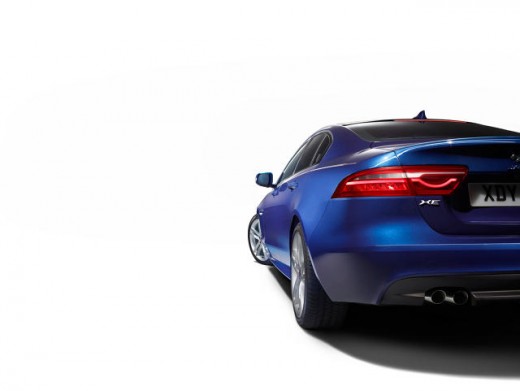Jaguar’s Ian Callum On Restraint, Leadership, And Following Up On A Hit Design
“At the end of the day, I still want people to look at this car and think, I want to get in and drive it!”
What are the particular design features people should be looking for in the new XE, your new small sedan?
Any designer will say this, but I think we at Jaguar are better at it. We work harder. The big picture for me, what matters, is the 200-yard look, where the car has a certain proportion, a certain profile and stance. We worked first and foremost at that. The detailing is almost secondary.
I always call it the draftsmanship of the picture. If you’re drawing a picture, the big picture, if you don’t get that right, nothing will be right. I could mention a few cars—but I won’t—that applies to. But we work very hard and Jaguar has an exciting entry [into the midsize segment], albeit not hugely different in terms of everything else. It never has been. I think there’s [an idea] that Jags look completely different. They haven’t really been, they’re just a little more better balanced, beautiful to look at, and so I work very hard with the team to get the proportions and the silhouette of the car as exciting as we can, within the constraints of the type of car that it is.
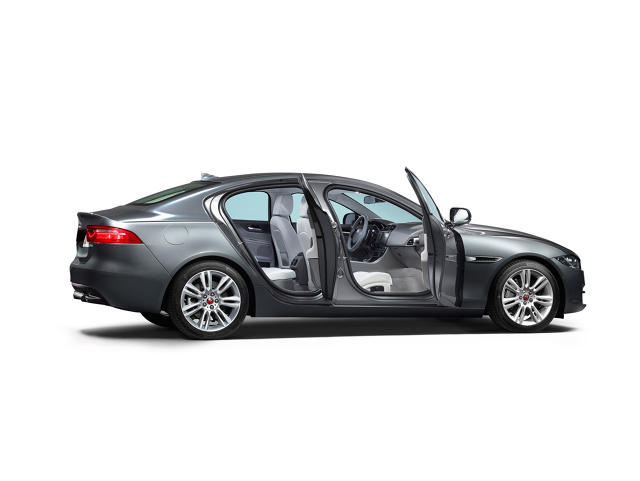
That’s the first thing. And then we apply the details almost on top of that. Graphics and stuff are very important, too. The other thing we always work very hard at is to make sure that the lines on the car really have a quality. You can quantify something; they’re not there randomly. They’ve actually got a job to do, drawing your eyes through the car or around it.
It’s really about collectively getting the draftsmanship of the car right. That’s the most important thing. Then you get into details such as lamps and graphics and grille and such like after that. They’re almost secondary. They still have to be good! But not as important as the silhouette of the car. Also the way the car sits relevant to the road. It’s subtle stuff, this. It’s not things that people simply recognize or are conscious of it, but we are subconsciously making them look at the car.

Speaking of, how much are you thinking about new customer enticement and catching eyes in a design, versus how a car is perceived after someone’s already purchased it?
It’s a good question. What we do is try to capture a spirit in a drawing, something that’s dramatic, and my job is to try to hold to that drama always through the process. And it’s a long process; it takes three years. That initial sense of excitement when you draw a car on pencil and paper, we analyze what’s exciting about it and we try to hold on to it.
In the meantime, you have to face absolute practicality [about] the car and how people live with it. And we just deal with that in an incremental way. We arrange the rear end, dimensional attributes, we’ll work hard with our engineering department. We work very hard with the engineers to create sections which are as strong as anything else and will be more efficient, and help us create the shape that we want.
At the end of the day, we may make a decision to reduce a certain dimension in the car—head room, or whatever it might be—as a result of just saying, “This is important.” That’s judgement we have to make. And you know, we’ve gone to several extremes with that in the past. But as we grow up as a company, we have to be a bit more pragmatic, so we go through that judgement bit by bit, little by little, and we push every millimeter of the car to affect the style along with the practicality.
That’s just how we work. I think we do that with great consciousness and awareness. And we come up with the car we’ve got at the end of the day. It takes effort. A lot of car companies and a lot of designers will have a set of hard points to work by because they’ll need to meet physical attributes, and they’ll perhaps join the dots and create the car you’re going to get. We don’t quite do it like that at Jaguar. The passion’s too much. Something that is visually attractive as well is a very important part of our heritage.
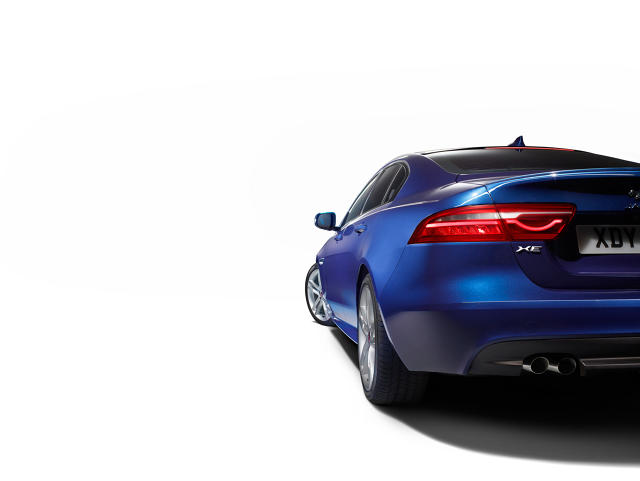
The F-Type was obviously an indicator of a new direction in the visual styling of Jaguar. What was it like designing something like the XE that is a little more restrained after something that was a little more balls out?
“Ball’s out.” I like that. The thing with the F-Type is that it had its own challenges. You’ve still got to get two people in it—and hopefully most of their luggage. But its first primary function is just to look great. It’s a huge amount of pleasure in creating something that looks that good. But even then, you’re still faced within the constraints of safety and aerodynamics and everything else.
The bigger challenge in doing something like the XE is that you’ve got an extra three people in the car, over and above an F-Type. It’s hugely challenging, and of course you can’t have the indulgence of swooping forms in the back, because you’ve got three people sitting abreast, and you can’t make the car narrower. We approached it in a pragmatic way. You use judgments, and the judgement for this car was: We have to make it big enough to get three people in the back. That’s just a fact of life. That judgement is made for you. That’s why people buy it.
I think subconsciously you approach it differently. You don’t go out to design a sports car and then find that you’re getting bullied into creating something different. You don’t accidentally design a sedan. But in our case, we set out to create a sedan that’s got a little bit more of an edge to it, and to its competitors.
When you start off at the beginning [designing a sedan] you start with a slightly different attitude, I think. It’s hard, though. It’s hard.
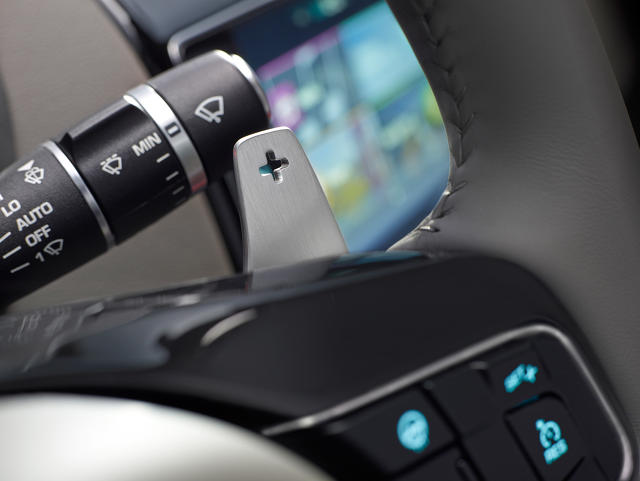
I feel like the saloon cars end up, on the street, more important to the brand image than the sports cars, in a way, because they’re more attainable.
That’s absolutely true.
With the XE, what are you trying to telegraph—what persona, image, or idea—to the driver?
“I want to drive it!” We’re still a sports car company. Our orientation is still sporty. Just because we’re creating a car for five people doesn’t change that value, it’s just that our constraints and our objectives are a little different. At the end of the day, I still want people to look at this car and think, I want to get in and drive it!
Now if someone said to me, “Design a car that looks very static and, let’s say, conservative. . . .” I don’t want to use the word safe, because all the connotations, but safe in terms of its character, [a car] that’s going to look tame. I could design that. But it wouldn’t be a Jaguar. It might be something else. And I’m sure other brands approach their [design] slightly differently, but it’s important to us at Jaguar that we message the fact that this is a sports car, it’s a driver’s car. Hence the silhouette.
I have to tell you: I’ve driven the car and it’s almost as fun to drive as the F-Type, in terms of agility and handling. It’s very impressive. And we give that message as you approach it. It looks quite racy; I quite like racy, it’s an old-fashioned word. And does it deliver? That’s another important thing: If you’re going to message something, it should deliver.
But that is the message: We are a sporty car company for sporty people. [laughs] And hopefully more youthfully minded people, as well.
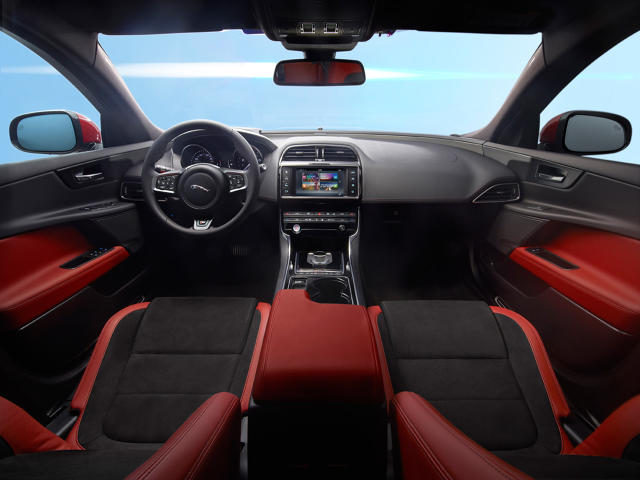
I can tell you that in the United States, at least among my enthusiast friends, the brand has a lot more attention than it did even five years ago.
That’s exactly what I want. We only survive as a brand to create F-Types as long as we can create other cars that enough people buy. Two things should happen: You gain a following, which speaks to brand momentum long-term. As you get older, you might move into something more expensive or a larger car. Also, the respect of the brand has to grow by word of mouth and attitude. And we’ve struggled for years, especially in the U.S., with reputation inherited from years back, and just lack of familiarity. We’ve got two models [of] F-Type [in addition to] the XJ; and the XF is a good seller, but [relatively] low volume. People don’t really know what the brand is. What the XE will do is bring it to the forefront of people who love the brand and can consider it as a purchase and seriously enjoy it, and actually tell others, ‘This is a great brand.’ But if we don’t have the XE, we’ll never get there.
Does that make sense?
I think we saw something similar here in the 2000s with Mercedes, when they started selling the C230 hatchback. Mercedes never had any penetration in the enthusiast or youth market. Just by having something that was, honestly, not a very great car, but something that could introduce people to the brand, or the experience of owning a Mercedes . . . Those people now, a decade or more on, will consider an S-Class, when they never would have considered one before.
We struggled without it for so long. Our entry car was a midsized luxury sedan, which is not going to reach the pocket of most people in their 30s. Except in China; there are a lot more young rich people over there! And now this next month, we’ll introduce F-Pace, which is a crossover. So we’re going from a three-car brand to a five-car brand in 18 months, so that’s almost doubled our visibility. In fact, in terms of volume, it will more than double our visibility, because we’re going into less niche markets with these two cars.
You have a name. You’re well-regarded in your industry. What is it like being “the name” while working with younger designers on your team? How does it affect them and how do you manage the occasional awkwardness of that while trying to help them develop their own careers?
You’re very flattering. I don’t really see myself as being anything more than the chief designer of Jaguar. While I’m in the studio, I’m one of the guys amongst younger people. We just work together; we’re friends. The last thing I want people on my team to feel difficult about is being honest. I do encourage their creativity. I still challenge them, because I still have this huge drive to be as [much of] a creative force as I can. Sometimes the young people hear the stuff I want to do and think I’m slightly crazy, but then they get into it and realize there was some reasoning behind it. I will listen to them all, be that work or other things. I like to think—and you may want to talk to them one day and find out!—when I’m in the studio I’m treated with the same amount of respect that anyone else should expect, but not with any great favor.
The difference is, people will look towards me for that final judgement, for a final decision. The biggest part of my job is to make decisions and direct. I have quite a firm hand. They know that. They get space beforehand. They know that, too. Young guys in their 20s, working on clay models, I may give them a little bit of coaching on one or two bits; maybe they talk back occasionally. (I’m quite happy when they do that.) It’s a very open environment. Compared to other studios I’ve seen, I think mine is a bit different; [in other studios] the boss can be quite intimidating, [it’s] very scary to say what you think. I will not tolerate that sort of attitude; I want people to be as open as possible.
So it’s not a place of “I’m a name.” We work together as a team. And I’ve encouraged that culture.
Just want to say that I badly wanted an Escort Cosworth when I was a kid, and it never came out here. But thanks all the same.
I can tell you a funny story there, actually. My son was growing up, and when he got to the age of eight or nine, he started to like cars. And he said to me, “Dad, my favorite car is the Escort Cosworth.” I said, “Oh, really!” I couldn’t tell him until he was about 15 that I actually designed it. He was quite flabbergasted when he eventually found out; quite a nice moment when I finally told him. For a few moments—a least a few days—his respect for me went up a couple of notches. But that soon faded. . . .
Related: Meet The Revved-Up Brothers Designing The World’s Best Cars For Jaguar And Ford
(90)

